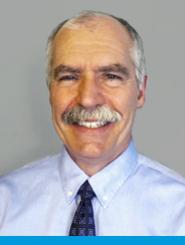Website to merge into Ochsner.org on August 8!
ochsner.org
ochsner.org

February is Black History Month. It's also the American Heart Association's Heart Month, where everyone is encouraged to learn CPR. The two observances converge in the book American Sirens by Kevin Hazzard, which tells of the first paramedic company, Freedom House Ambulance, an all-black unit. The book also relates how one of Freedom House's founders, Dr. Peter Safar, first invented CPR.
Dr. Safar, an anesthesiologist in the 1950s, was frustrated with the resuscitation technique of the time: the back-pressure-arm-lift. If a patient wasn't breathing, you rolled him face down, pressed on the middle of his back, and lifted his arms over his head and pumped them up and down. After watching that technique fail to save lives over and over, Dr. Safar decided to try something more intuitive, mouth-to-mouth breathing.
Now the crazy part. For his research, Dr. Safar anesthetized and paralyzed volunteer doctors, nurses and medical students to recreate real-life emergencies. Recording the volunteers' vitals as they ran out of oxygen, Dr. Safar first had professionals try the back-pressure-arm-lift. That technique invariably failed to resuscitate the patient. After pumping oxygen back into the volunteers to revive them for part two, he let them begin to slip away again.
From the start, Dr. Safar intended mouth-to-mouth to be performed by untrained bystanders. So, part two of the experiment began with ordinary people standing by (including Boy Scouts as young as 10 years-old) as Safar explained how mouth-to-mouth was done. Then, kneeling on the floor, they'd try it on the asphyxiating test subject. It worked! Safar's new method was a resounding success. He coupled that with chest compressions for stopped hearts, and CPR was born. A few years later, moving to Pittsburgh to start a new anesthesiology department, Safar would also help start Freedom House Ambulance and invent the “paramedic.”
When Dr. Safar moved to Pittsburgh in 1966, he was appalled how people were treated before they got to the hospital. If you were too sick or injured to transport yourself, you called a funeral home for a hearse to come get you. In Pittsburgh city limits, the police sent paddy wagons. Neither morgue attendants nor cops had any medical training.
Phil Hallen was also fed up with Pittsburgh's prehospital care. A former ambulance attendant himself, Hallen worked for a medical non-profit organization. He teamed with Jim McCoy, a community activist who had started Freedom House Enterprises, a job-training center in the mostly black Hill District. While McCoy wanted to train locals for maintenance jobs, Hallen had a more ambitious idea: starting an ambulance company. They went to the famous Dr. Safar, who was even more ambitious: let's invent a new professional to staff these ambulances, the “paramedic.”
When the three went to city hall for financing, Pittsburgh balked. Money for ambulances? You're going to train WHO (black men)? To be WHAT (what's a paramedic?)? The city relented in the end, but limited Freedom House Ambulance to serve only the Hill and one other neighborhood.
Safar wrote a curriculum, trained the first class and sent them out. Initially these new paramedics were tentative: being first, they had no mentors to show them how it was done. They were harassed by police and stared at by skeptical bystanders. Eventually, the training kicked in and, determined to prove themselves and their unit, they began saving lives. Over time, word spread throughout Pittsburgh: if you're sick, no matter where you live, call Freedom House Ambulance, not the cops.
Learn more about the first paramedics in the book American Sirens. Honor them by learning CPR for Heart Month and Black History Month. You may save a life yourself!